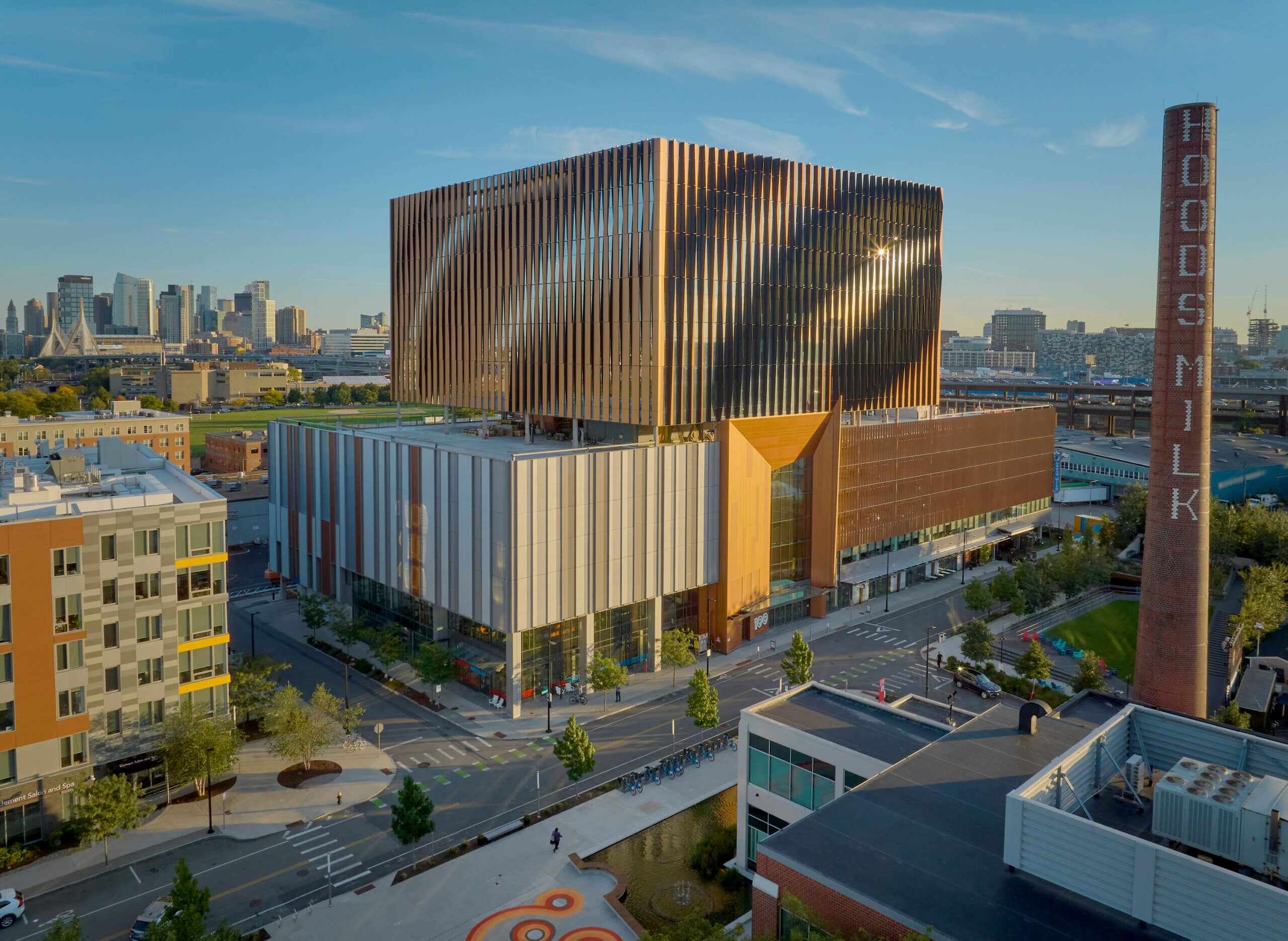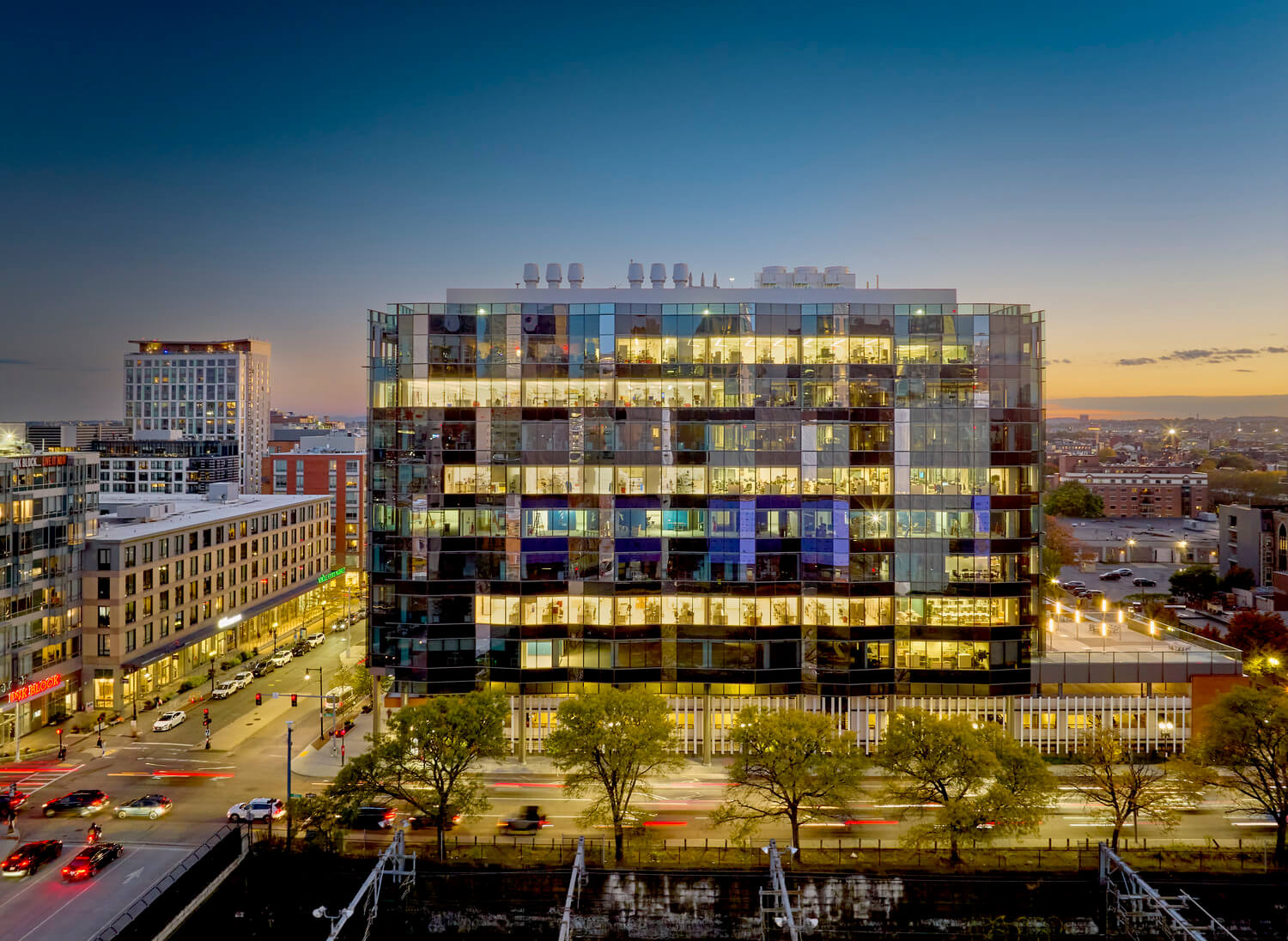
Right now the Commonwealth of Massachusetts is rolling out its Large Building Energy Reporting (LBER) regulations.
While currently limited to energy reporting, these new rules are the first step in what will surely become a long-term campaign to roll out carbon-reduction mandates across the entire state—just as updated BERDO and BEUDO rules have done in Boston and Cambridge.
In other words, LBER is putting developers, building owners, school districts, and universities on notice: Start reporting now, and be prepared to comply with future laws requiring buildings to be carbon neutral by 2050.
In this article, we answer the two big questions we’ve been hearing from clients:
- What should Massachusetts building owners and tenants do to comply with LBER in 2025?
- How can I get ahead of anticipated rules that will require me to curb my building’s carbon emissions?
Complying with LBER
50 Otis Street
View Project
What are my responsibilities under LBER?
If you are a building owner or tenant of a “Covered Building”—i.e. any building 20,000 square feet or greater—you must report each year all additional energy use beyond what is being reported by your utility provider.
Examples of additional energy use include:
- Fuel oil
- Propane
- Wood
- On-site renewable energy generation
You do not need to report electric, gas, and steam energy use. This is the responsibility of your utility. But you do have to report any energy use that is not utility sourced (see list above).
Building owners of Covered Buildings in Massachusetts must report additional energy use directly to the Department of Energy Resources (DOER) by June 30, 2025, using Energy Star Portfolio Manager. If you have tenants, you must send them a written request for energy information. This deadline passed on April 30, 2025.
If you own multiple buildings on a property, you can choose to report the buildings individually or as a “campus”.
If you received a written request from the building owner for energy use information by April 30, 2025, you must respond within 30 days. If you do not share this information and are leasing more than 5% of the total gross floor area of the building, you may face action from DOER (see next question, “What is the penalty for not reporting?”)
What is the penalty for not reporting?
DOER will levy a daily fine of $150 on the building owner and/or individual tenants, depending on which party has failed to comply.
As a building owner, you will receive a written notice from DOER for failure to report energy use. If you do not provide the requested information within 30 days of this notice, you may be fined $150 daily until you comply. However, if your failure to report is due to a tenant failing to share information on time (and their lease is greater than 5% of the building’s square footage), you will not be penalized.
If you are a tenant who is leasing more than 5% of the building, you will receive a written notice from DOER for failure to share energy use with the building owner. If you do not provide the information within 30 days of this notice, you may be fined $150 daily until you comply.
321 Harrison Ave
View Project
I’m a building owner—what immediate steps should I take?
The first step is to confirm whether your building is on the list of Covered Buildings. You can do this via a searchable list on the state’s website. (As a building owner, you may have already received a letter from the DOER in February 2025 inviting you to respond online.) We recommend that building owners “claim” their building with the state via this form as soon as possible.
The first big set of deadlines for building owners was April 30, 2025. This included:
- Written request for energy use information from tenant(s)
- Request to dispute inclusion in the Covered Buildings list
- Request to designate multiple buildings as a campus
- Request to designate a third party as a building owner representative
For a fully detailed guide to LBER regulations, including exemptions and disputes, check out the DOER’s Large Building Energy Reporting Knowledgebase.
I’m already reporting under BERDO or BEUDO—do I need to do anything?
No. The cities of Boston and Cambridge will share data with DOER on behalf of all building owners who currently report for BERDO and BEUDO due to their size and use type.
That said, some buildings in Boston and Cambridge may be subject to LBER reporting even if they do not currently report under BERDO or BEUDO. In Cambridge, for example, this includes buildings between 20,000 and 25,000 square feet. Both ordinances have comprehensive lists of covered buildings.
Preparing for carbon reduction mandates
When will Massachusetts announce carbon reduction mandates for building owners and tenants?
Massachusetts is committed to a goal of net zero energy emissions by 2050. While the state has yet to confirm any mandates for carbon emissions thresholds, it is a near certainty that they will do so—most likely within the next ten or 15 years. Boston’s BERDO is a good reference point: it took eight years to evolve from an energy reporting law (2013) into a carbon reduction law (2021).
Our advice to clients? As soon as possible, start planning to incrementally decrease your building’s carbon emissions. Massachusetts’ next energy codes update, due in 2027, is expected to include more stringent energy efficiency rules—a key part of achieving carbon neutrality. These regulations may impact the timeframe to replace your existing facility equipment.
Here is a generic example of a decarbonization timeline that building owners could follow, informed by the LBER process:

How can I redesign my building to be carbon neutral?
The first step is to get accurate data on your current energy use—exactly what LBER was introduced to help with. As part of the reporting process, DOER will share with building owners all aggregated energy use data, including those provided by utilities.
Armed with this data, SMMA can work with you, our client, to analyze your building systems and develop a decarbonization plan tailored to your equipment end-of-life plan and/or carbon reduction goals.
In terms of general design approaches, our colleague Adrian Walters wrote recently about how to decarbonize lab buildings, an extremely energy-hungry building type. His core remedies—retrofitting more efficient MEP systems, improving the thermal performance of the building envelope, generating renewable energy—can be successfully applied to any project.

